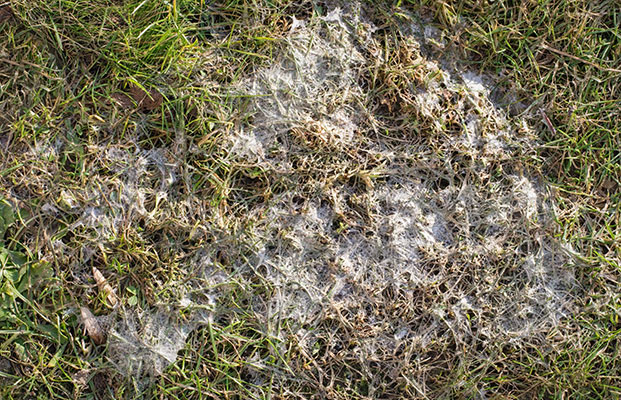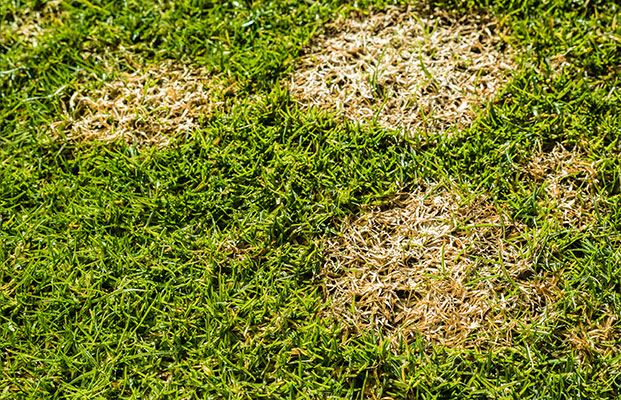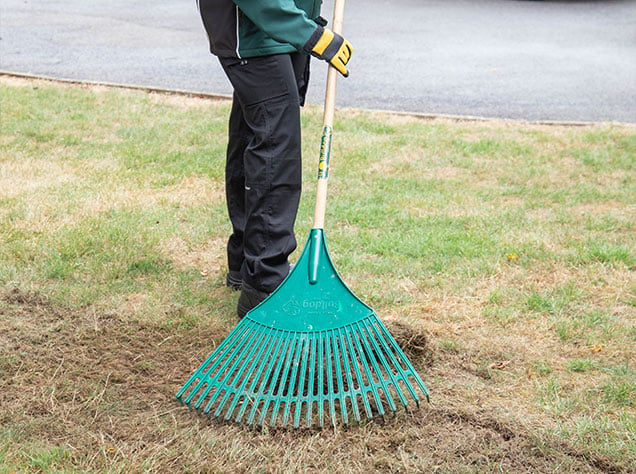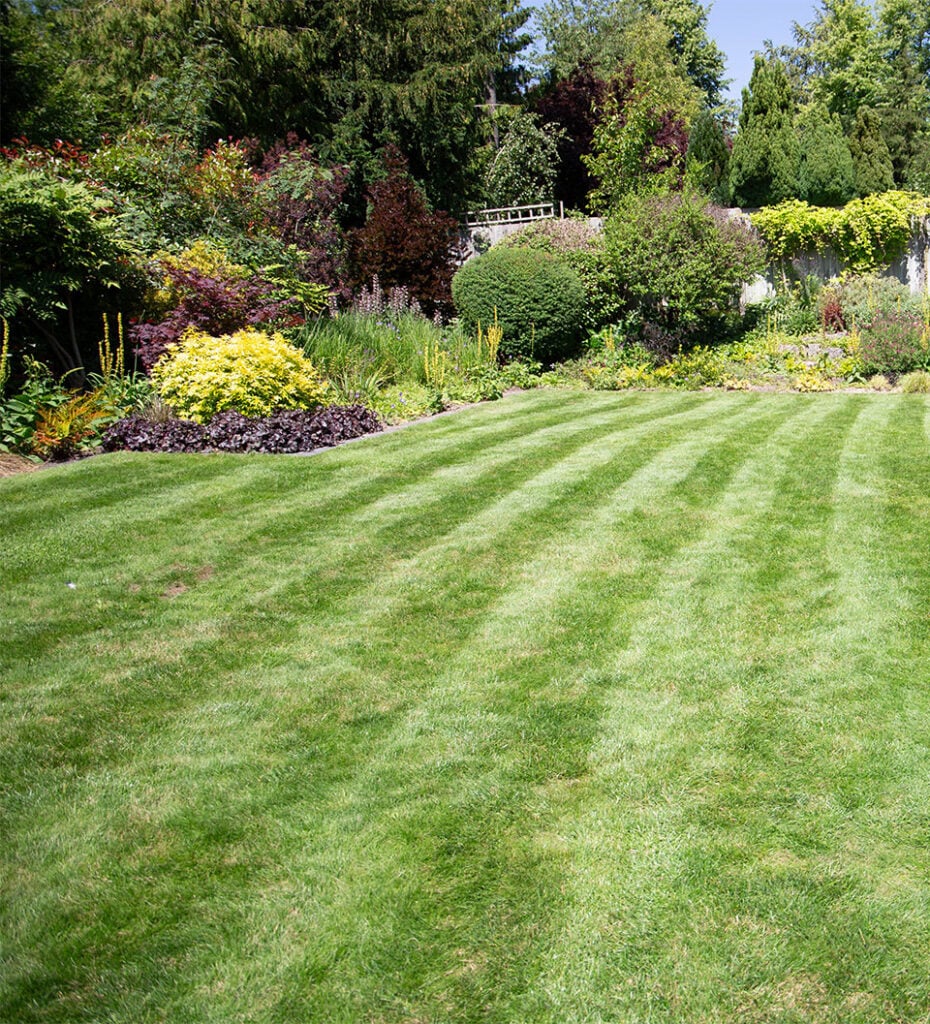
What is snow mould?
Fusarium patch, otherwise known as snow mould, is something that occurs when a moist and humid environment covers your lawn and encourages fungal growth. This environment could be caused by layers of snow, leaves or other debris that hasn’t been properly raked from the lawn.
Snow mould isn’t just something that impacts one small area of turf; it damages and kills grass with the possibility of spreading further across the lawn if it is not treated quickly.

How can I spot snow mould?
Snow mould does have a distinct appearance but isn’t always immediately identifiable at first. It will often appear as small patches of yellow-coloured, dying grass, but it is far more noticeable following wet weather as the dying grass will rapidly increase in size.
There are two different types of the disease:
- Typhula incarnata, which is noticeable by its grey colouring, usually occurs after prolonged snow coverage
- Microdochium nivale, which is identifiable by its pinkish colouring, can occur in cool, wet conditions
How can I treat snow mould?

As snow mould is mainly caused by excess moisture, the best recommendation for treatment is to aerate and remove thatch or moss from your lawn, to help air and oxygen get to the grassroots. These treatments will also help to improve your lawns’ drainage, so when the weather is cold and damp (the perfect climate for snow mould to thrive), your grass will be ready to fight back.
We offer aeration treatments as well as moss and thatch removal in our ongoing lawn care packages.
We also recommend more standard lawn care practices that you can carry out yourself that will help, such as mowing consistently, including once per month during the winter, and also raking away any debris that falls on your lawn.
If you spot snow mould in your lawn, don’t worry; we are here to help. Get in touch, and we can arrange for one of our Greensleeves lawn care experts to visit and apply a fungicide treatment to kill the disease and get your lawn back on track.
Don’t feel stressed about snow mould! We’re here to help.
We are the UK's No1 most trusted
Excellent 4.8 / 5 based on 11,000+ reviews


